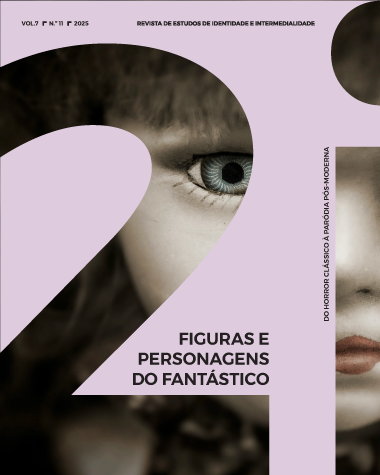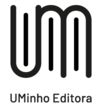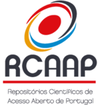Calls
2i JOURNAL | IDENTITY AND INTERMEDIALITY STUDIES
CALL FOR PAPERS — Nº 12 (2025) : MEDICAL HUMANITIES AND GLOBAL HEALTH: LITERATURE, ETHICS, AND CONTEMPORARY CHALLENGES
Deadline for submissions of contributions: 15th June 2025
Editors: Maria de Jesus Cabral (Un. Aveiro) and Marie-France Mamzer (Un. Paris Cité)

Presentation
Medical Humanities emerged in the 1970s in the United States, in a historical context marked by opposition to the increasing technicization of medicine. This interdisciplinary field is part of a broader movement of interest from the humanities and social sciences in medicine, gradually developing with the aim of reintegrating ethical, cultural, and social dimensions at the heart of medical practice (Fantini & Lambrichs, 2014; Bonnah et al., 2024). This evolution reached a decisive moment in the reflections on bioethics and the doctor-patient relationship developed by Jonsen and Toulmin (1988) within the framework of medical casuistry, at a time when American society was becoming aware of physicians' determining role in decisions about life.
In Europe, particularly in the Francophone sphere, medical humanities are indebted to the fundamental works of Georges Canguilhem, philosopher of medicine (Canguilhem, 1983), Jean Starobinski, literary critic and cultural historian (Starobinski, 1963), and Gérard Danou, physician and specialist in literature-medicine relationships (Danou, 1994; Danou, 2007/2015). Enriched by contributions from phenomenology and social sciences, Medical Humanities question the place of the person in the healthcare system. However, the desire to rehumanize medicine has sometimes led to confusion between humanities, humanism, and humanitarianism (Gaille & Foureur, 2010; Wenger, 2011).
Literature has been, since immemorial times, a privileged space for interrogating the human condition, experiences of illness and health, as well as the complex relationships between individuals and their environment (Cabral & Danou, 2015; Cabral, Almeida & Danou, 2017). Jean Starobinski (1977) reveals a fundamental division in modern medicine, inherited from Cartesian thought: the separation between science and sensibility. This division, however, does not configure itself as opposition but as necessary complementarity.
Narrative medicine, emerging in the late 1980s in the United States, is grounded in the integration of medical humanities within an interdisciplinary approach (Charon et al., 2017). Inspired by Ricœur's notion of narrative identity (1990), it develops through three axes: temporality, singularity, and intersubjectivity. Narrative competence (Charon, 2001) implies attentive listening to patients' stories, which are not limited to biological symptoms but reveal emotional and contextual dimensions of lived experience. However, as Woods (2011) warns, it is necessary to avoid over-extending the concept of narrative, recognizing the specificity of different forms of expression in the medical field.
Anticipatory imaginaries constitute a privileged terrain for exploring contemporary bioethical questions, allowing for symbolic testing of human limits through speculative scenarios that transcend classical philosophical approaches. As evidenced by Hottois's works (1984, 2017), this prospective dimension proves fundamental for considering new dimensions of responsibility in a technological civilization where the growing autonomy of technique questions our decision-making capacity and the very essence of the human (Jonas, 1979). The dilemmas of transhumanism and artificial intelligence thus find in literature a genuine laboratory for ethical problematization (Cabral & Mamzer, 2022).
In the twenty-first century, while the future of humanities continues to be widely discussed (Aguiar e Silva, 2010; Citton, 2013), medical humanities face unprecedented challenges. Bleakley (2024) emphasizes the urgency of moving beyond a narrow conception of health to interrogate the essential links between human and environmental health. This perspective, aligned with the World Health Organization's One Health concept, is reinforced by Lesne, Gnansia, and Laurent (2021), who emphasize the need to include health threats—whether human, animal, or plant—among planetary priorities.
In this context of profound transformations in care practices, as well as in face of contemporary health and environmental challenges, this issue of the 2i Journal proposes to explore the evolutions and new perspectives of this constantly evolving field.
Possible topics for reflection:
- Medical Humanities: traditions, contexts and limits;
- Models of humanities integration in medicine;
- Literature and trans/formation in medicine;
- Narrative medicine: institutional experiences;
- The notion of case, between medicine and literary creation;
- Literature and global health;
- Ecopoetic perspectives on the living;
- Fiction and bioethics: anticipatory imaginaries;
- New dimensions of responsibility in technological civilization.
CALL FOR PAPERS — Nº 11 (2025) : FIGURES AND CHARACTERS OF THE FANTASTIC: FROM CLASSIC HORROR TO POSTMODERN PARODY
Deadline for submissions of contributions: 15th January 2025
Editors: Xaquín Núñez, Alessandra Massoni and Teresa Ángeles

Presentation
Monsters, vampires, ghosts, zombies, robots, superheroes constitute an expanded and recognizable gallery of figures and characters from fantastic literature. The transgression of reality or verisimilitude that narratives of the unusual propose is frequently based on distortions of space and/or time and also of the characters who represent the otherness of the human. They reflect, as philosopher José Gil (2006) reminds us, what we are not, but also what we could become, and enunciate our contradictions, limitations and metamorphoses. Whether in a dimension of perversion or aberration, or in an idealization of the superman, in which good is capable of overcoming evil, fantastic characters manage to disturb us because of what is both close and disquieting to us.
The fantastic narrative, represented in literature, cinema, television or comics, is based on a tradition of character figurations that led to several rewritings, remakes, adaptations or even homages. Since its creation, often associated with terror, horror, enigma or thriller, artistic practice has been incorporating new perspectives that enable creative updates, adapting the fantastic character's behavior to the ideological or cultural purposes of our days. Within the paradigms of postmodernity, resources such as parody, in the sense developed by Linda Hutcheon (2001), the grotesque, the ridiculous or the irony reinforce the performative capabilities of fantastic creatures. And, as Boccuti and Roas (2022) explain, the binomial between fantastic and humor, far from responding to an evasive or banal aesthetic, presents an ideological depth and an expressive forcefulness that add resources to the uncanny and its derivatives of horror and horror.
In this theoretical context, the present thematic issue of 2i Journal proposes to analyze the continuities and ruptures that the character of the fantastic supposes for the politics and poetics of contemporary identity; to study the narrative strategies that are carried out to re-update the most traditional and recognizable figures of fiction of the uncanny; to reflect on its revisions and rewritings in order to adapt them to new cultural paradigms and specific cultures; or even to critically explore the intermedial porosities and relationships that can be materialized between literary and audiovisual productions.
Ultimately, this edition of 2i Journal invites us to debate how fantastic characters and figures are represented today, which strategies are predominant in these representations and what they can tell us about human identity(ies).
Possible topics for reflection:
- Media materializations of the fantastic character: literature, cinema, television, comics;
- Rewritings of the figures of the uncanny;
- Ideological dimensions of humor, parody and grotesque in the construction of the fantastic character;
- Transmedia universes in fantastic works or myths;
- Adaptations and updates of figures and myths of otherness in specific cultural universes.

.jpg)










